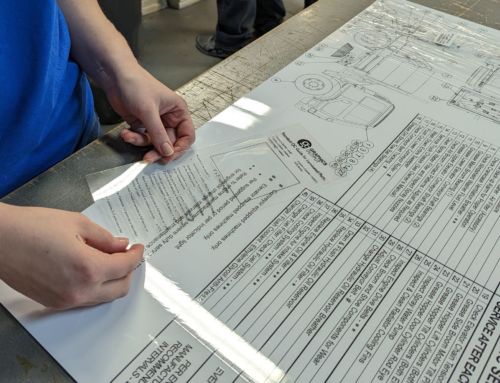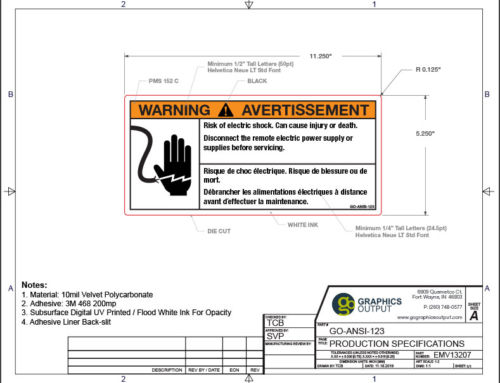The Importance of Defining QC Tolerances
Quality Control is something everyone expects, but not something everyone really thinks about. When it comes down to it, not all parts are clearly pass or fail. This grey area can leave you high and dry in the case of a questionable scenario when measurable components of a decal or overlay are defined, but the tolerance for those components are not.
For example, say you need a new label that is 1.25” x 2.25” large. You sign off on a proof with that sizing, and then receive parts that are 1.25” x 2.30” large. This could be a non-issue, something that goes by unnoticed during the decal application and you go on your merry way. Now imagine that you have an indented area for your decal to fit into that is 1.28” x 2.28”. Your supplier may have a standard cut size tolerance of 0.05”, meaning that the decal they are supplying is within their standards, and because you did not specify a cut dimension tolerance, you are now left with an order of decals that do not fit on your product (without altering them).
Defining acceptable and unacceptable tolerances provides objective guidelines versus subjective ones, preventing complications before they occur and saving time for you and your supplier if a problem does arise. In the first blog post on how to define quality standards on your graphics and decals, we covered different types of defects, defining defect sizes and setting a number of allowable defects. Today is all about tolerance.
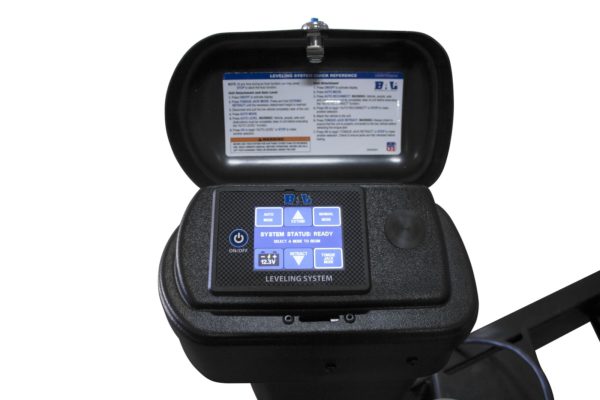
Companies rely on correct cut tolerances to make sure that overlays fit correctly onto their products.
Cut Dimension Tolerance
All cuts and cut-outs for overlays and decals should be sized correctly with accurate tolerances. Tolerances are important because too small of a cut-out size for an overlay means the parts may not fit correctly, and housing for the switches could then cause overlays to bubble, ripple, or even delaminate. Too large of a cut-out size opens up the possibility of moisture or dust entering the unit, causing the electric or mechanical components to possibly lose functionality or fail. The most common defined cut dimension tolerance is ±0.4 mm (~0.016”), with more critical sized parts using a tolerance of ±0.25 mm (~0.01”). Some digital cutting machines have built-in tolerances as low as ± 0.1 mm, but requiring a tolerance that low is relatively unheard of.
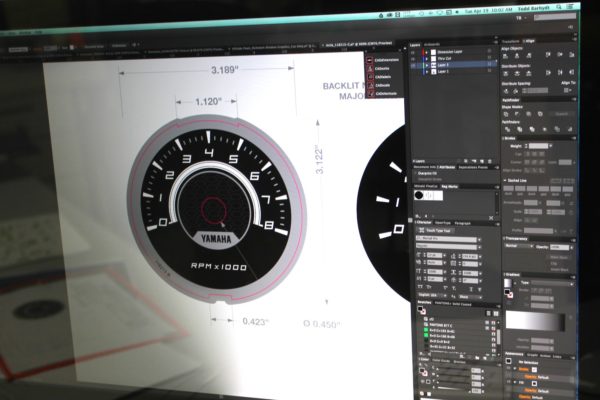
Correct cut tolerances start with good art. Size callouts are used to determine the base size for all cuts.
Color Variance Tolerance
Digital and screen printed products alike will have slight variances in color consistency. For digital parts, this can be caused by different ink batches, nozzles in the printhead being slightly clogged and age of the press. In screen printed parts, colors vary due to slight changes in the ink formula. Both processes can also be affected by small inconsistencies in the material and UV cure lamps.
The change of visual perception between two colors can be measured by a spectrophotometer in units of ΔE (Delta E). The larger the ΔE, the higher the variance between two colors. Many customers specify PMS colors, CMYK colors, or give their printers samples to match, but some do not specify the ΔE that needs to be upheld throughout future runs. A ΔE of less than 1 is not perceptible to the human eye, while a ΔE of 100 means the two colors are the exact opposites. For colors that are not as critical, a ΔE or less than 5 (perceptible at a glance) is a common standard. For fairly critical colors, a ΔE of 3 or less (perceptible through close observation) should be specified. Colors that are extremely critical (such as logos for major brands and Fortune 500 companies) may use an acceptable ΔE of 1 or less.
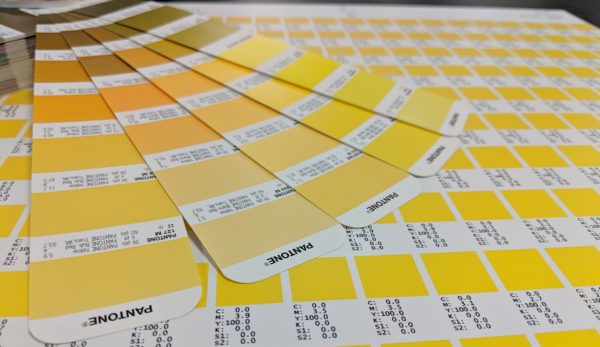
We all interpret color in slightly different ways. Even something as seemingly specific as yellow can mean noticeably different things to different people. Using tools such as a Pantone Color enables you to communicate your precise color requirements in a language that is recognized around the world.
Once you have all of your quality standards set in place, the last action is to provide them to your graphics supplier. The different ways to do this are to write up a document with all quality criteria included in it, or to update all engineer drawings to include quality criteria, or do a combination of both. Many will specify cut tolerances on drawings and then reference other “standard” or “spec” documents for more specific guidelines.

Example of quality standards specifications.
Graphics Output has worked with a variety of graphic users to create quality control guidelines throughout the years. If your documentation is lacking and you want some help outlining your standards for current and future vendors, feel free to reach out by emailing sales@gographicsoutput.com or calling 260-748-0577.

